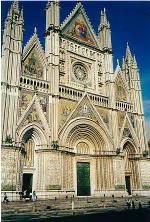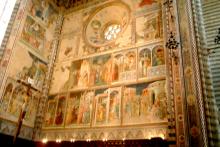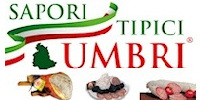 |
| Duomo di Orvieto |
The three-nave interior is partly Romanesque in style, as in the transept that cuts across the central block of the building forming a cross shape. The presbyterium, a part of the church that was reserved only for the clergy, is Gothic.
 |
| Affreschi |
The Duomo is also known for the Last Judgement cycle of frescoes by Luca Signorelli. The cycle had in fact been started by Beato Angelico, who was aided by Benozzo Gozzoli.
Contrary to the trend in Europe at the time, Gothic architects in Italy designed large, flat surfaces on the interior walls of their cathedrals, so that painters could cover them in frescoes. The independent free city states vied with each other and with the powerful abbeys in securing the work of the finest painters of the time.
Artists were able to elaborate a personal concept of painting that resulted in a new way of depicting interiors. Landscape came to be painted as something living. Greater attention was given to observing the individual and new peaks of elegance were attained in both form and use of colour.








